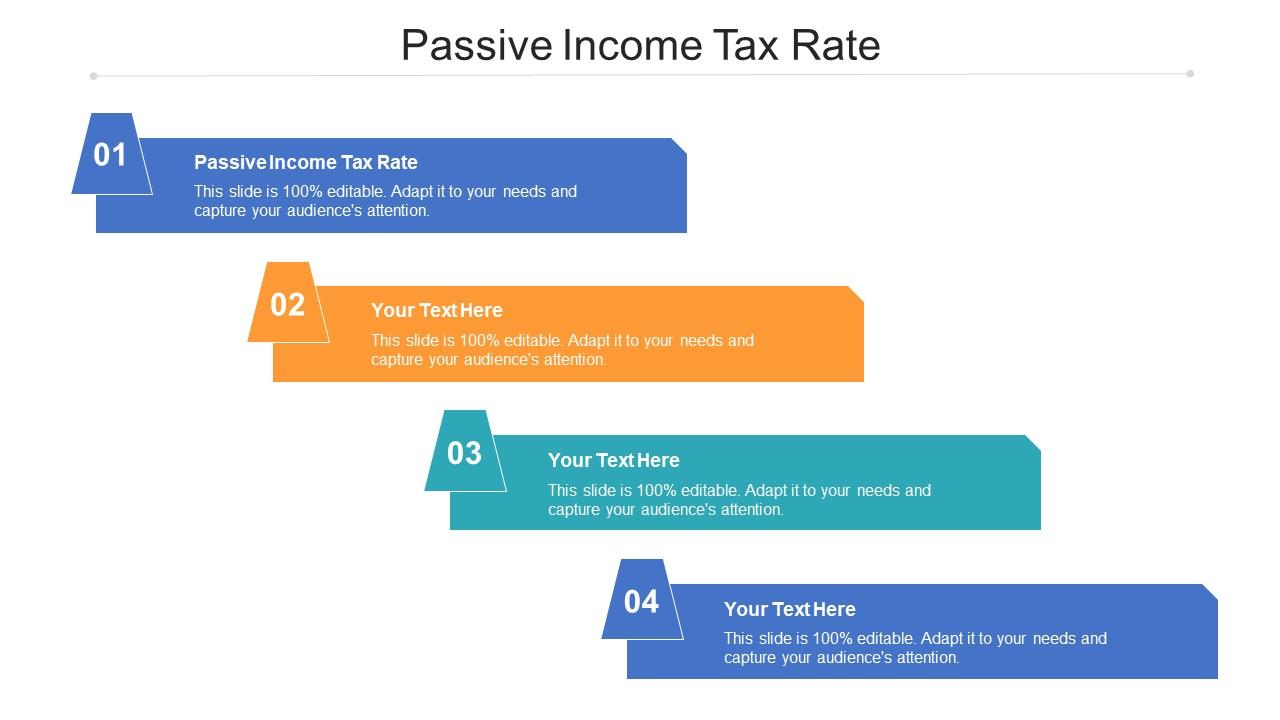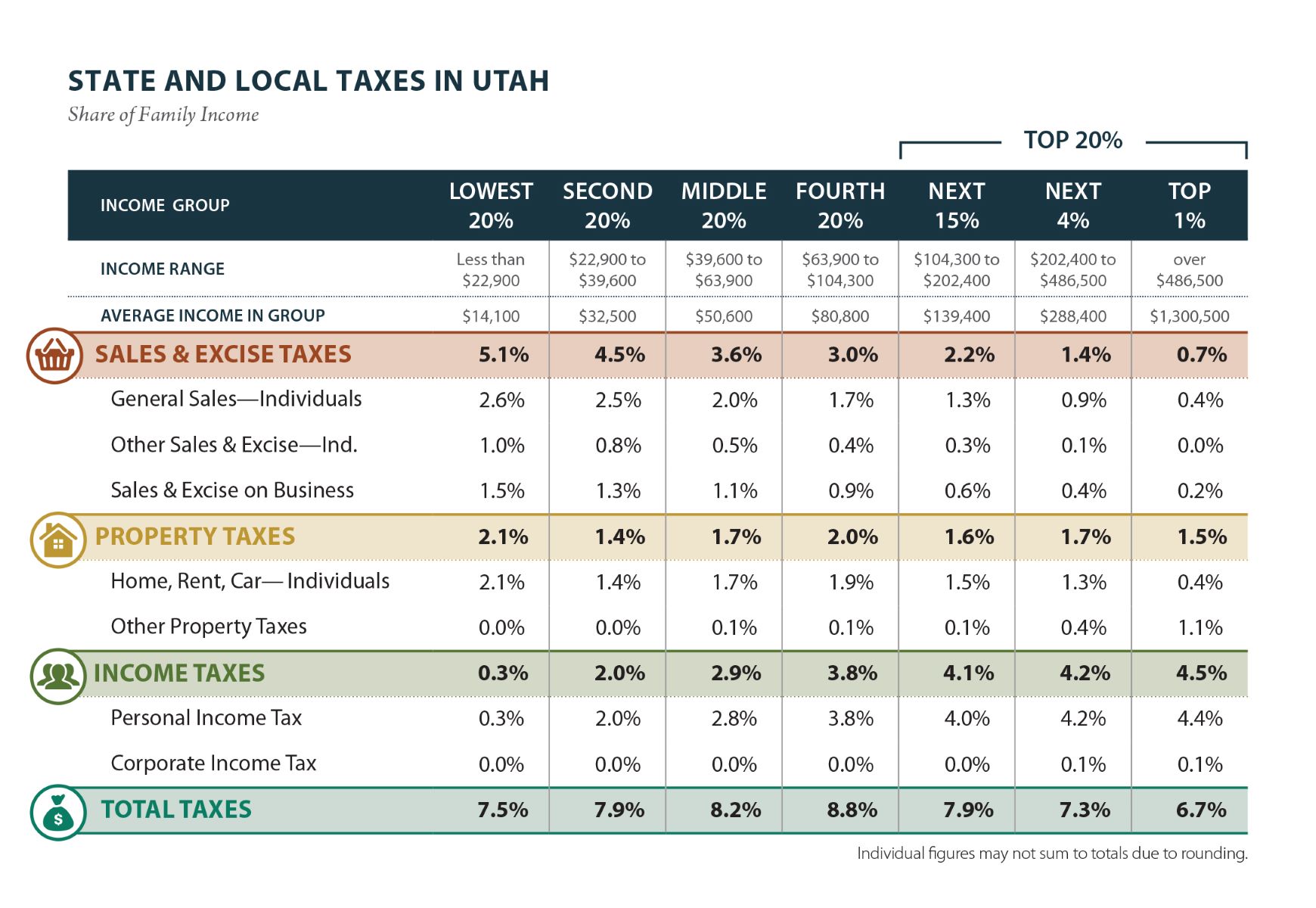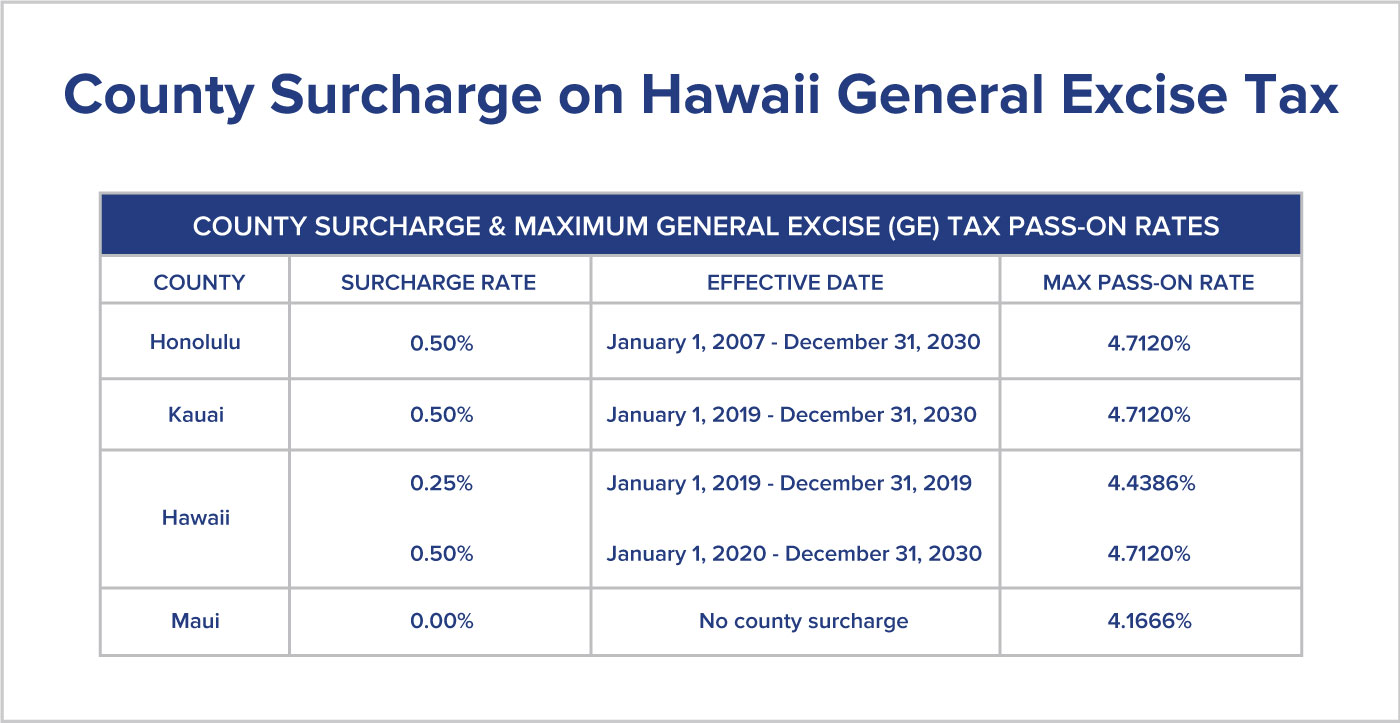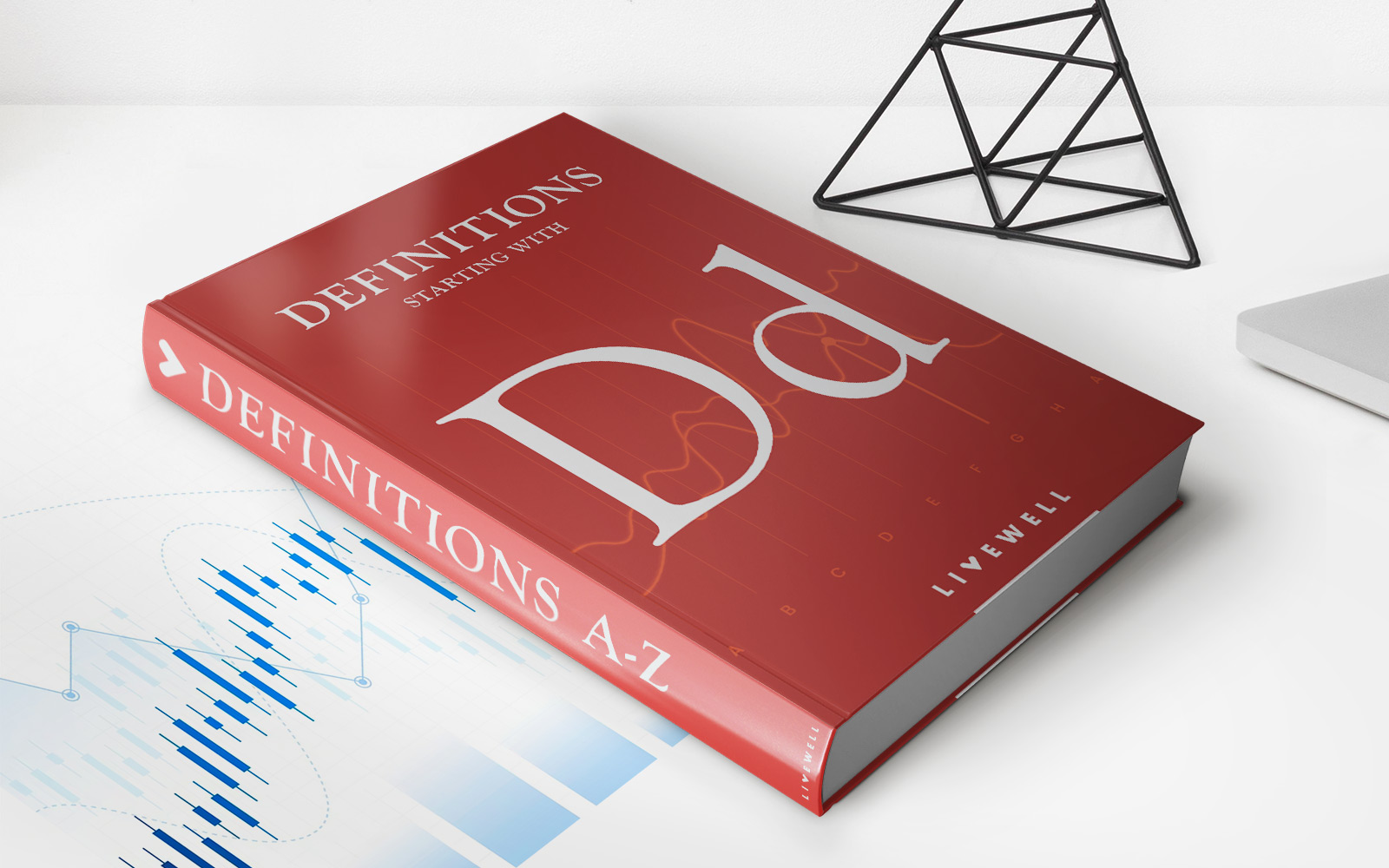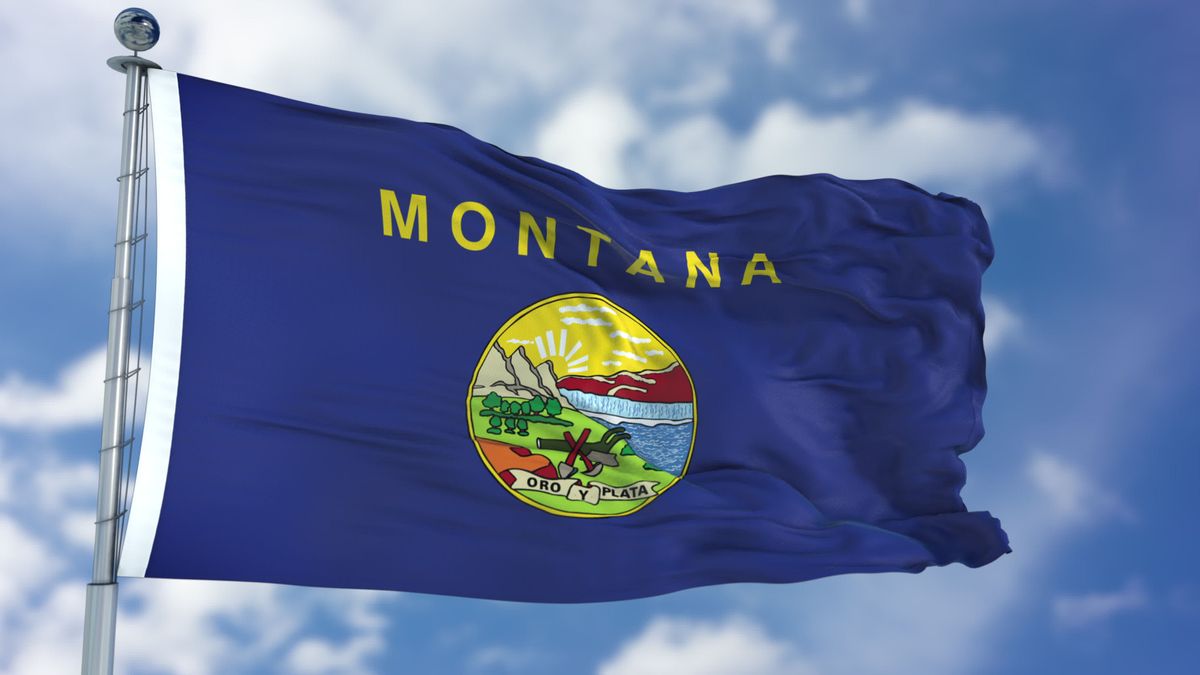

Finance
What Is Montana State Income Tax Rate
Modified: February 21, 2024
Looking for information on Montana state income tax rates? Find out everything you need to know about finance and taxes in Montana.
(Many of the links in this article redirect to a specific reviewed product. Your purchase of these products through affiliate links helps to generate commission for LiveWell, at no extra cost. Learn more)
Table of Contents
- Introduction
- Understanding State Income Tax
- Overview of Montana State Income Tax
- Montana State Income Tax Rates
- How Montana State Income Tax Rates are Determined
- Calculating Montana State Income Tax
- Montana State Income Tax Credits and Deductions
- Filing Montana State Income Tax
- Montana State Income Tax Forms and Resources
- Conclusion
Introduction
Welcome to a comprehensive guide on Montana State Income Tax rates. Understanding how state income taxes work is essential for individuals and businesses alike, as it directly impacts their financial obligations. This article aims to provide you with an overview of Montana State Income Tax rates, how they are determined, and the process of filing your taxes in the state.
State income taxes are levied by individual states on the income earned by residents and businesses within their jurisdiction. These taxes help fund various state programs and services such as education, healthcare, and infrastructure. While the federal government imposes income taxes, each state has the authority to set its own tax rates and regulations.
Montana, known as the Treasure State, is no exception when it comes to state income tax. In this beautiful state, residents and businesses are required to pay state income tax on their earnings. Whether you’re a Montana resident or considering moving to the state, understanding the tax rates and procedures is crucial for proper financial planning.
Montana State Income Tax rates are based on the amount of taxable income earned by individuals and businesses. These rates are progressive, meaning that different income levels are taxed at different rates. Montana’s tax system has seven income brackets, each with its own tax rate. The higher your income, the higher your tax rate will be.
Maintaining organized financial records and understanding the tax brackets and rates is important for accurate tax filings. This article will guide you through the process of calculating your Montana State Income Tax, as well as provide information on available tax credits and deductions. Additionally, we will cover the necessary forms and resources you’ll need when filing your state income tax return.
Before we delve into the details, it’s important to note that tax laws and regulations are subject to change. It’s always recommended to consult with a tax professional or refer to the official Montana Department of Revenue website for the most up-to-date information.
Now, let’s dive into our comprehensive guide on Montana State Income Tax rates and everything you need to know about fulfilling your tax obligations in the Treasure State.
Understanding State Income Tax
State income tax is a tax imposed on the income earned by individuals and businesses within a specific state. While the federal government collects income taxes from individuals and businesses across the country, state income taxes allow individual states to generate revenue to fund state programs and services.
Unlike federal income tax, which is determined by the Internal Revenue Service (IRS), each state has the authority to set its own tax rates and regulations. This means that the rules and rates for state income tax can vary significantly from one state to another.
State income tax is typically progressive, meaning that the tax rates increase as income levels rise. This ensures that higher-income individuals pay a larger percentage of their income in taxes compared to those with lower incomes.
There are several ways in which states calculate and collect income taxes. The most common methods include:
- Flat Rate System: Some states have a flat rate for income tax, where all taxpayers are subject to the same tax rate, regardless of their income level. This simplifies the tax calculation process.
- Graduated Rate System: This system, also known as a progressive tax system, is more common across states. It involves multiple tax brackets, with different income levels taxed at different rates. Higher income levels are subject to higher tax rates.
- No Income Tax: A few states, such as Alaska, Florida, Nevada, South Dakota, Texas, Washington, and Wyoming, do not impose a state income tax. Individuals and businesses in these states are only required to pay federal income tax.
It’s important to understand and comply with state income tax requirements, as failure to do so can result in penalties and legal consequences. Additionally, understanding your state’s tax laws and regulations can help you maximize possible tax credits and deductions, reducing your overall tax liability.
Now that we have a basic understanding of state income tax, let’s shift our focus to Montana State Income Tax and explore its rates, calculations, deductions, and more.
Overview of Montana State Income Tax
Montana State Income Tax is an important component of the state’s revenue system. It is used to fund various state programs and services that benefit Montana residents and businesses. The Montana Department of Revenue is responsible for administering and collecting state income taxes.
Montana follows a progressive tax system, meaning that the tax rates increase as income levels rise. The state has seven income tax brackets, ranging from 1% to 6.9%. The tax rates are applied to different income thresholds, ensuring that taxpayers with higher incomes pay a higher percentage of their earnings in taxes.
In addition to the progressive tax rates, there are certain exemptions and deductions available to Montana taxpayers. These deductions, such as deductions for dependents, retirement income, and student loan interest, can help reduce the overall tax liability for eligible individuals.
It’s important to note that Montana State Income Tax applies to all types of income, including wages, salaries, self-employment income, rental income, and investment income. Income from both within and outside the state is subject to taxation for Montana residents.
Montana residents who earn income in other states may be eligible for a tax credit for taxes paid to another state. This helps avoid the double taxation of income. Similarly, non-residents who earn income in Montana may also have specific tax obligations to fulfill.
Montana State Income Tax returns are due on April 15th, the same deadline as federal tax returns. However, if April 15th falls on a weekend or holiday, the deadline is extended to the next business day. Failing to file your Montana State Income Tax return on time may result in penalties and interest charges.
It’s important to keep detailed records of your income, expenses, and any applicable deductions and credits. Maintaining organized financial documents will make the tax filing process smoother and help ensure accurate reporting.
Now that we have a general overview of Montana State Income Tax, let’s explore the specific tax rates and how they are determined in greater detail.
Montana State Income Tax Rates
The Montana State Income Tax rates are based on a progressive tax system, which means that different income levels are subject to different tax rates. There are seven income tax brackets in Montana, with rates ranging from 1% to 6.9%. The tax brackets and rates for the 2021 tax year are as follows:
- For single filers, the tax rates are as follows:
- 1% on the first $3,100 of taxable income
- 2% on taxable income between $3,101 and $5,550
- 3% on taxable income between $5,551 and $8,300
- 4% on taxable income between $8,301 and $11,200
- 5% on taxable income between $11,201 and $14,500
- 6% on taxable income between $14,501 and $18,400
- 6.9% on taxable income over $18,400
- For married couples filing jointly, the tax rates are the same as for single filers but with wider income ranges.
- For heads of household, the income ranges and tax rates fall between those of single filers and married couples filing jointly.
- For married couples filing separately, the tax rates are the same as for single filers.
It’s important to note that these rates are subject to change, so it’s always advisable to consult the most up-to-date information from the Montana Department of Revenue.
In addition to the income tax rates, there is also an additional 6% tax on unearned income, such as dividends and interest, for individuals with an adjusted gross income over $3,400.
Understanding the tax brackets and rates is crucial for accurate tax planning and filing. It helps individuals and businesses estimate their tax liability and make informed financial decisions.
Keep in mind that Montana State Income Tax rates are independent of federal income tax rates. Taxpayers must calculate and fulfill their obligations for both federal and state income taxes separately.
Now that we have an understanding of the tax rates in Montana, let’s explore how these rates are determined and how you can calculate your Montana State Income Tax.
How Montana State Income Tax Rates are Determined
Montana State Income Tax rates are determined by the state legislature and are based on the income brackets and corresponding tax rates set forth in state tax laws. The tax rates are designed to be progressive, meaning that as income levels increase, the corresponding tax rates also increase.
When determining income tax rates, the Montana legislature considers various factors, including the state’s budgetary needs, revenue projections, and economic conditions. The goal is to strike a balance between generating sufficient revenue to fund state programs and services while maintaining a fair and equitable tax system.
The Department of Revenue is responsible for implementing and administering the state income tax laws. They provide guidance on tax calculations, deductions, and credits to ensure taxpayers comply with the laws and regulations accurately. The department also updates the tax brackets and rates as necessary to reflect any changes made by the legislature.
It’s important to note that Montana State Income Tax rates can change over time. The state legislature has the authority to adjust the tax brackets and rates through legislation. Therefore, it is essential for individuals and businesses to stay informed about any updates or changes in tax rates to accurately calculate their tax liability.
Additionally, it’s worth mentioning that the Montana tax code includes provisions for adjustments, credits, and deductions that can impact the final tax liability. Taxpayers may be eligible for various deductions, such as those for dependents or specific expenses, which can help reduce the overall tax burden.
To ensure accurate calculations and compliance with Montana State Income Tax laws, it is recommended to keep detailed records of income, expenses, and any supporting documentation for credits and deductions claimed. This will help individuals and businesses determine their taxable income and accurately calculate their tax liability.
Now that we understand how Montana State Income Tax rates are determined, let’s move on to the next section, where we will explore how to calculate your Montana State Income Tax.
Calculating Montana State Income Tax
Calculating your Montana State Income Tax requires a clear understanding of the tax brackets and rates, as well as the specific rules and guidelines set forth by the Montana Department of Revenue. Here is a general overview of the steps involved in calculating your Montana State Income Tax:
- Determine your filing status: Montana offers several filing statuses, including single, married filing jointly, married filing separately, and head of household. Your filing status will determine the applicable tax rates and deductions.
- Calculate your taxable income: Start by determining your total income for the tax year. This includes wages, salaries, self-employment income, rental income, and any other taxable income. From this total, subtract any eligible deductions or exemptions to arrive at your taxable income.
- Apply the appropriate tax rates: Once you have calculated your taxable income, refer to the Montana State Income Tax brackets and rates to determine the applicable tax rate for each portion of your income. Multiply each portion of your taxable income by the corresponding tax rate to calculate the tax due for that income bracket.
- Summarize your tax liability: Add up the tax amounts calculated for each income bracket to arrive at your total Montana State Income Tax liability.
- Consider tax credits and deductions: After calculating your tax liability, consider any eligible tax credits or deductions that can help reduce your overall tax obligation. These may include deductions for dependents, education expenses, retirement contributions, or other applicable credits authorized by the state.
- Finalize your tax return: Once you have calculated your tax liability, ensure that you have completed all necessary tax forms accurately. Include any supporting documentation for deductions and credits claimed. Double-check your calculations and validate that all information provided is correct.
It’s important to note that this is a general overview of the tax calculation process. Depending on your specific circumstances, such as additional income sources or deductions, the process may be more complex. In such cases, it is advisable to consult a tax professional or use tax preparation software to ensure accurate and compliant calculations.
Understanding how to calculate your Montana State Income Tax will help you plan your finances effectively and ensure that you fulfill your tax obligations accurately.
In the next section, we will delve into the various tax credits and deductions available to Montana taxpayers that can help reduce their overall tax liability.
Montana State Income Tax Credits and Deductions
Montana offers several tax credits and deductions that can help taxpayers reduce their overall state income tax liability. These credits and deductions are designed to provide financial relief and incentives for specific expenses or situations. Here are some of the common tax credits and deductions available to Montana taxpayers:
1. Standard Deduction: Montana taxpayers have the option to claim a standard deduction, which is a predetermined amount based on their filing status. For the tax year 2021, the standard deduction amounts for single filers and married couples filing jointly are $3,150 and $6,300, respectively.
2. Itemized Deductions: In addition to the standard deduction, taxpayers may choose to itemize their deductions. This allows them to deduct specific expenses, such as state and local taxes paid, mortgage interest, medical expenses, and charitable contributions. It’s important to note that itemizing deductions requires careful record-keeping and supporting documentation.
3. Dependent Deductions: Taxpayers may be eligible for deductions for dependents, including children or qualifying relatives, which can help reduce their taxable income. The deduction amount for each dependent is $2,020 for the 2021 tax year.
4. Education Credits: Montana offers various tax credits for education expenses, such as the American Opportunity Credit and the Lifetime Learning Credit. These credits can offset the cost of tuition and fees paid for eligible educational programs.
5. Retirement Contributions: Taxpayers who contribute to eligible retirement plans, such as traditional IRAs or self-employed retirement plans, may be eligible to deduct their contributions, reducing their taxable income.
6. Other Deductions: Montana also allows deductions for certain expenses, such as student loan interest, medical savings account contributions, and self-employment expenses, among others.
It’s important to consult the Montana Department of Revenue or a tax professional to ensure eligibility and accurate calculation of these credits and deductions. The availability and applicable rules for each credit and deduction can vary based on factors like income level, filing status, and specific qualifications.
Utilizing these credits and deductions can help taxpayers reduce their overall tax liability, potentially resulting in significant savings. Be sure to keep accurate records and gather all necessary documentation to support your claims.
In the next section, we will discuss the process of filing your Montana State Income Tax return and the available forms and resources to assist you.
Filing Montana State Income Tax
Filing your Montana State Income Tax return is a necessary step in fulfilling your tax obligations and ensuring compliance with state tax laws. Here’s an overview of the process:
1. Determine your filing status: Begin by determining your filing status, which can be single, married filing jointly, married filing separately, or head of household. Your filing status determines the applicable tax rates, deductions, and credits.
2. Gather necessary documents: Collect all the relevant documents needed to complete your tax return. These may include your W-2 forms, 1099 forms for any additional income, documentation for deductions and credits, and any other supporting documents related to your financial and tax situation.
3. Choose your filing method: Montana taxpayers have the option to file their state income tax return electronically or by mail. Filing electronically is generally faster and more convenient, and it can also help reduce the risk of errors. The Montana Department of Revenue provides an online portal for e-filing your tax return.
4. Complete the tax return: Use the appropriate tax forms for your filing status. For most individuals, Form 2 is used. Make sure to accurately enter your personal information, income details, deductions, and any credits or payments made throughout the tax year. Double-check all the entered information for accuracy and completeness.
5. Calculate your tax liability: Using the tax rates and tax tables provided by the Montana Department of Revenue, calculate your state income tax liability based on your taxable income.
6. Report any tax credits and deductions: If you are eligible for any tax credits or deductions, make sure to properly claim them on your tax return. This may involve completing additional forms or providing supporting documentation.
7. Sign and submit your tax return: Sign your completed tax return and submit it to the Montana Department of Revenue either electronically or by mail. If filing by mail, make sure to use the correct address for your specific region or tax type.
8. Pay any tax due: If you have a tax liability after calculating your return, make the necessary payment to the Montana Department of Revenue. Payment options include electronic payment, check, money order, or through the online payment portal provided by the department.
9. Retain copies of your tax documents: Keep copies of your filed tax return, as well as any supporting documents, for your records. These documents may be needed for future reference or for tax audit purposes.
It’s important to note that tax laws and regulations can change, so it’s always advisable to consult the Montana Department of Revenue or a tax professional for the most up-to-date information regarding filing requirements and procedures.
Now, let’s explore the available forms and resources that can assist you in filing your Montana State Income Tax return.
Montana State Income Tax Forms and Resources
When filing your Montana State Income Tax return, you will need to use the appropriate tax forms based on your filing status and the complexity of your tax situation. The Montana Department of Revenue provides various forms and resources to assist taxpayers in fulfilling their tax obligations. Here’s an overview of the key forms and resources available:
1. Form 2: Form 2 is the standard income tax return form for most individuals in Montana. It is used for reporting income, deductions, and credits. Make sure to carefully complete all sections of the form, including personal information, income details, and calculations.
2. Other Forms: Depending on your specific tax situation, you may need to utilize additional forms. These include Form 2EZ for simpler tax situations, Form 2EC for estimating tax payments, Form 2EXT for requesting an extension of time to file your tax return, and Form 2INC for reporting income adjustments and additions.
3. Online Filing: The Montana Department of Revenue provides an online platform, known as My Revenue, for electronic filing of state income tax returns. This online system simplifies the filing process, calculates tax liability, and offers faster processing times. It also provides a secure portal for making tax payments.
4. Montana Department of Revenue Website: The official website of the Montana Department of Revenue serves as a valuable resource for taxpayers. It offers access to forms, instructions, publications, and FAQs related to state income tax. The website provides up-to-date information on tax laws, changes, and filing requirements.
5. Taxpayer Assistance: The Montana Department of Revenue provides taxpayer assistance through its helpline and local offices. Trained professionals are available to answer questions, assist with tax form completion, and provide guidance on filing requirements and procedures.
6. Online Resources: Various online resources, such as tax preparation software, can assist in accurately completing and filing your Montana State Income Tax return. These software programs provide step-by-step guidance, help ensure calculations are accurate, and offer electronic filing options.
It’s important to consult the Montana Department of Revenue website and refer to the most current forms and instructions for accurate filing. Be sure to keep copies of all forms and supporting documentation for your records.
Remember, if you have complex tax situations or are unsure about any aspect of filing your Montana State Income Tax return, it’s advisable to seek assistance from a tax professional or certified public accountant.
Now that we have explored the available forms and resources, let’s conclude our comprehensive guide on Montana State Income Tax.
Conclusion
Understanding Montana State Income Tax is essential for individuals and businesses operating in the state. This comprehensive guide has provided you with valuable information on various aspects of Montana State Income Tax, including tax rates, deductions, credits, and the filing process.
Montana State Income Tax rates are progressive, meaning they increase as income levels rise. By familiarizing yourself with the tax brackets and rates, you can accurately calculate your tax liability and plan your finances accordingly. Additionally, taking advantage of available deductions and credits can help reduce your overall tax obligation.
When it comes to filing your Montana State Income Tax return, ensure that you have the necessary forms and documentation to support your income and deductions. Choose the appropriate filing method—online or by mail—and submit your return by the deadline to avoid penalties or interest charges.
Throughout the tax filing process, it’s crucial to stay informed about any changes to tax laws or regulations. The Montana Department of Revenue website, along with their helpline and local offices, serve as valuable resources for up-to-date information and assistance.
Remember, if you have complex tax situations or are unsure about any aspect of your Montana State Income Tax return, it’s wise to seek guidance from a tax professional who can provide expert advice tailored to your specific needs.
By understanding and fulfilling your Montana State Income Tax obligations, you contribute to the funding of essential state programs and services that benefit all Montanans. Proper tax planning and compliance ensure a smooth and seamless process, allowing you to focus on your financial goals and responsibilities.
Thank you for reading our comprehensive guide on Montana State Income Tax. Stay informed, keep accurate records, and consult the relevant authorities or professionals when needed. May your tax season be stress-free and your financial endeavors in Montana be prosperous!



